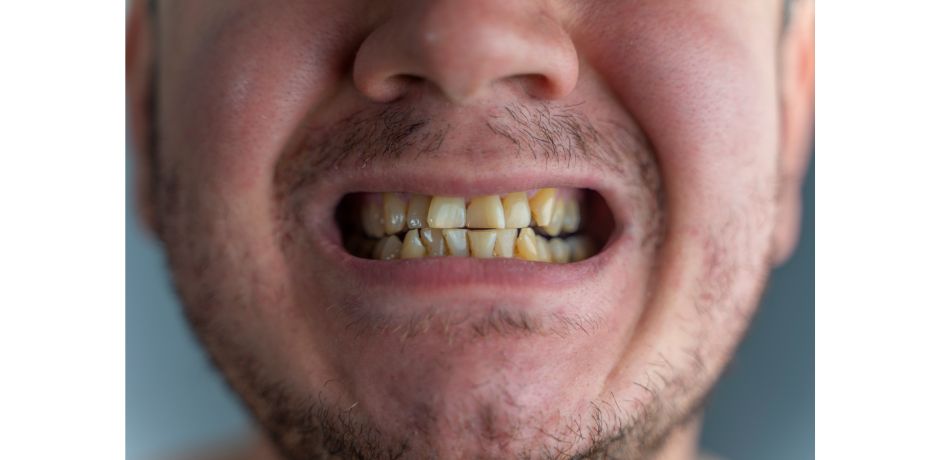Tooth staining
Tooth staining is an external discoloration due to the stains buildup on the tooth surface. Internal discoloration is due to absorption of pigment particles into tooth structure. Discolorations are common and have many different causes:

Dental plaque: Although virtually invisible on the tooth surface, plaque may become stained by chromogenic bacteria.
Calculus: Neglected plaque eventually calcifies, and leads to formation of a hard deposit on the teeth, especially around the gumline.
Tobacco: Smoking tobacco products tends to form a yellow-brown-black stain around the necks of the teeth above the gumline.
Certain foods and drinks: Foods, such as vegetables, that are rich with carotenoids can stain teeth like sports drinks, coffee, tea and red wine.
Certain medications: Tetracycline and its derivatives are capable of intrinsic discoloration.
Metallic compounds: Exposure to such metallic compounds may be in the form of medication or other environmental exposure: iron, iodine, copper, nickel and cadmium.
Dental caries: Begins as an opaque white spot on the surface of the enamel. As demineralization progresses, the various lesion eventually cavitates and the underlying brown color becomes visible.
Fluorosis: May occur when there is chronic and excessive exposure to fluoride during the years of tooth development. Exposure can also occur via bottled water and fluoride toothpaste.
Dental trauma: May result in discolorations, following luxation injuries red discoloration may develop almost instantly. Teeth may turn grey following trauma-induced pulp necrosis.
Amalgam fillings: often stain the tooth they are placed in. This is most noticeable in very old fillings, a shadow that can be visible through the tooth and make it appear darker.
Discoloration of the front teeth is one of the most common reasons people seek dental care, even people with teeth of normal shade ask for them to be whitened. Management of tooth staining depends on the cause and have a individual cosmetic concern. In other cases it may indicate underlying pathology such as pulp necrosis or rarely a systemic disorder. By cleaning the teeth, whether with "whitening" (i.e., abrasive) toothpaste at home, or a treatment carried out by a professional (e.g., scaling and/or polishing) is one of the ways of preventing future buildup of stains. Alternatively the appearance of the tooth can be hidden with dental restorations (e.g., composite fillings, veneers, crowns) or whitening procedure.
Original post here: Tooth staining
Comments
Post a Comment